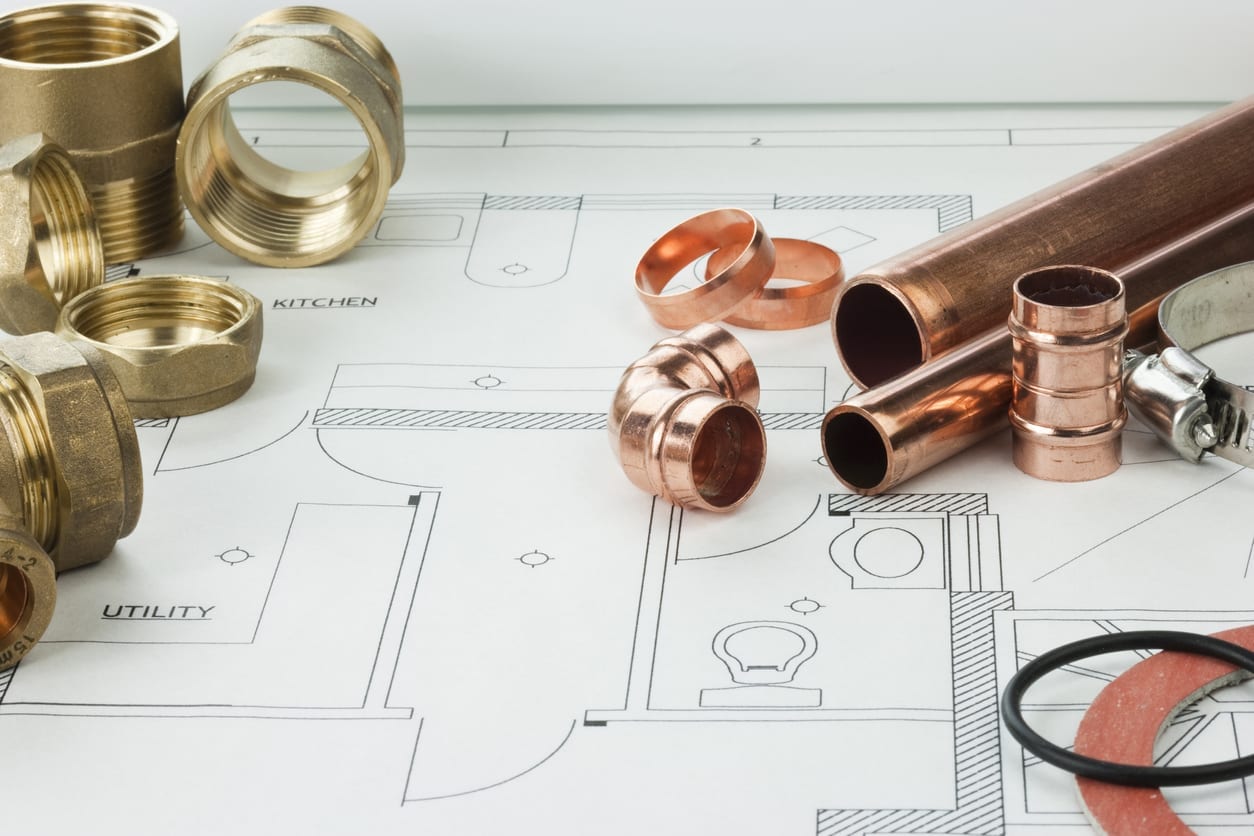What're your thoughts on Anatomy of a House: Understanding the Components?

Understanding just how your home's plumbing system functions is important for every single property owner. From supplying clean water for drinking, food preparation, and bathing to securely getting rid of wastewater, a well-maintained pipes system is crucial for your family members's health and comfort. In this detailed overview, we'll discover the intricate network that comprises your home's plumbing and offer suggestions on upkeep, upgrades, and managing common problems.
Intro
Your home's pipes system is greater than just a network of pipes; it's an intricate system that ensures you have access to clean water and effective wastewater removal. Recognizing its components and exactly how they collaborate can aid you avoid pricey repairs and ensure everything runs smoothly.
Fundamental Parts of a Pipes System
Pipelines and Tubes
At the heart of your plumbing system are the pipelines and tubing that carry water throughout your home. These can be made of different products such as copper, PVC, or PEX, each with its advantages in regards to sturdiness and cost-effectiveness.
Components: Sinks, Toilets, Showers, etc.
Fixtures like sinks, toilets, showers, and bath tubs are where water is used in your home. Recognizing just how these fixtures attach to the pipes system assists in identifying problems and planning upgrades.
Shutoffs and Shut-off Points
Shutoffs control the flow of water in your pipes system. Shut-off shutoffs are crucial throughout emergency situations or when you require to make repairs, allowing you to isolate parts of the system without interrupting water circulation to the whole residence.
Supply Of Water System
Main Water Line
The primary water line links your home to the metropolitan water system or a personal well. It's where water enters your home and is distributed to numerous fixtures.
Water Meter and Stress Regulatory Authority
The water meter procedures your water usage, while a pressure regulator makes sure that water flows at a safe stress throughout your home's pipes system, preventing damage to pipes and components.
Cold Water vs. Warm water Lines
Comprehending the distinction between cold water lines, which supply water straight from the primary, and hot water lines, which carry warmed water from the hot water heater, assists in troubleshooting and preparing for upgrades.
Drainage System
Drain Pipes and Traps
Drain pipes bring wastewater away from sinks, showers, and toilets to the sewage system or sewage-disposal tank. Traps avoid sewer gases from entering your home and also catch particles that might cause clogs.
Ventilation Pipelines
Ventilation pipes permit air into the drain system, preventing suction that can reduce water drainage and trigger traps to empty. Correct air flow is necessary for preserving the stability of your plumbing system.
Relevance of Appropriate Drainage
Ensuring appropriate water drainage prevents back-ups and water damages. On a regular basis cleaning up drains pipes and preserving traps can prevent expensive repair work and expand the life of your pipes system.
Water Heating System
Kinds Of Water Heaters
Hot water heater can be tankless or standard tank-style. Tankless heaters heat water as needed, while containers keep heated water for instant use.
How Water Heaters Connect to the Pipes System
Understanding exactly how hot water heater attach to both the cold water supply and warm water distribution lines helps in identifying issues like not enough warm water or leaks.
Upkeep Tips for Water Heaters
Consistently flushing your hot water heater to get rid of sediment, examining the temperature level setups, and examining for leakages can prolong its life expectancy and improve power performance.
Common Pipes Issues
Leakages and Their Reasons
Leakages can take place due to aging pipes, loosened fittings, or high water pressure. Resolving leaks without delay protects against water damage and mold development.
Obstructions and Obstructions
Obstructions in drains and bathrooms are commonly caused by flushing non-flushable products or a buildup of grease and hair. Using drain displays and being mindful of what drops your drains can avoid obstructions.
Signs of Pipes Troubles to Watch For
Low tide stress, slow drains pipes, foul odors, or uncommonly high water costs are indicators of prospective pipes troubles that ought to be attended to promptly.
Plumbing Upkeep Tips
Regular Evaluations and Checks
Arrange yearly plumbing evaluations to capture problems early. Search for indicators of leakages, corrosion, or mineral accumulation in taps and showerheads.
Do It Yourself Maintenance Tasks
Easy tasks like cleaning tap aerators, looking for commode leaks using dye tablet computers, or shielding exposed pipes in cool environments can protect against major plumbing problems.
When to Call an Expert Plumber
Know when a pipes problem needs specialist experience. Attempting complicated repair work without proper expertise can cause even more damage and greater fixing expenses.
Upgrading Your Plumbing System
Reasons for Updating
Upgrading to water-efficient fixtures or replacing old pipelines can boost water high quality, decrease water bills, and increase the value of your home.
Modern Plumbing Technologies and Their Advantages
Check out innovations like clever leakage detectors, water-saving toilets, and energy-efficient hot water heater that can conserve money and reduce ecological influence.
Cost Considerations and ROI
Calculate the ahead of time prices versus long-lasting savings when taking into consideration plumbing upgrades. Numerous upgrades pay for themselves through reduced energy costs and fewer repairs.
Ecological Effect and Conservation
Water-Saving Fixtures and Appliances
Installing low-flow faucets, showerheads, and toilets can substantially decrease water usage without giving up efficiency.
Tips for Minimizing Water Usage
Straightforward behaviors like repairing leaks immediately, taking shorter showers, and running full lots of laundry and dishes can save water and reduced your energy bills.
Eco-Friendly Plumbing Options
Take into consideration sustainable pipes materials like bamboo for flooring, which is durable and eco-friendly, or recycled glass for kitchen counters.
Emergency situation Preparedness
Steps to Take Throughout a Plumbing Emergency situation
Know where your shut-off shutoffs lie and exactly how to shut off the supply of water in case of a burst pipeline or major leak.
Relevance of Having Emergency Contacts Convenient
Keep contact info for local plumbing professionals or emergency services conveniently available for fast reaction throughout a plumbing situation.
DIY Emergency Fixes (When Appropriate).
Short-lived fixes like using air duct tape to spot a leaking pipe or positioning a bucket under a leaking tap can minimize damage up until a professional plumbing gets here.
Verdict.
Recognizing the makeup of your home's plumbing system empowers you to preserve it properly, saving time and money on repair services. By adhering to regular maintenance routines and remaining notified concerning modern-day plumbing innovations, you can ensure your plumbing system runs successfully for years to come.
HOW YOUR PLUMBING SYSTEM WORKS
Which Pipes Do What?
Blue lines = fresh water supply entering the building Red lines = hot water supply entering the building Grey lines = pipes carrying waste away from the building and venting pipes carrying gases away from the building (through the roof) YOUR MAIN PLUMBING SYSTEMS
There are two main plumbing systems that support your home s basic plumbing needs one that brings clean water into your home, and one that sends dirty water away from your home. Connected to the toilet, bath, shower, and other faucets in your home, these two systems keep your water flowing in the right directions.
ACCESSING FRESH WATER
Fresh and clean water is brought into your home through the main water supply line . Filtered through one pipe, this water is pressured to flow into the various fixtures in your home at any given time.
This water can be sourced from a well located on your property, a pond or river (mostly cottages), or, as in most cases, from the city s municipal water treatment centre. However, it is important to note that water that is untreated, such as the water siphoned from ponds or rivers, may not be safe to drink. Personal water supplies always need to be treated for hardness and contaminants before consumed.
MUNICIPAL WATER SUPPLIES
Improve taste and odour Remove sediment Eliminate hardness Reduce chlorine COLD WATER SUPPLY VS. HOT WATER SUPPLY
Cold water flows into your home or building through the service line, which then distributes hot or cold water to your fixtures. This line is most commonly run through a central column that runs floor to floor. Hot water runs in short and straight pipes as the longer the pipeline, the more heat that will be lost in the transfer. Having shorter pipes also allows residents to access hot water more quickly.
WASTE WATER SYSTEM
Your wastewater system is divided into two parts pipes that send wastewater away from your home and venting pipes that send sewer gas away from your home. Sewage water travels through pipes that flush the water and waste towards local sewers that are operated and managed by your city or town. Most sewer systems rely on gravity to move the wastewater to where it needs to go.
The further away from your toilet or sink, the larger wastewater pipes become. This allows for waste to be disposed of from various parts of your home or business at once without pipe blockages. The angle and flow of these pipes are also essential for keeping your waste pipes clear of build up.
https://harrisplumbing.ca/how-your-home-plumbing-system-works/

Do you like reading about Exploring Your Homes Plumbing Anatomy? Leave a remark directly below. We would be glad to listen to your feelings about this blog post. Hoping that you visit us again later on. Sharing is caring. Helping others is fun. Many thanks for taking the time to read it.
Free Estimates
 Mr. T Then & Now!
Mr. T Then & Now! Bradley Pierce Then & Now!
Bradley Pierce Then & Now! Katie Holmes Then & Now!
Katie Holmes Then & Now! Susan Dey Then & Now!
Susan Dey Then & Now! Kerri Strug Then & Now!
Kerri Strug Then & Now!